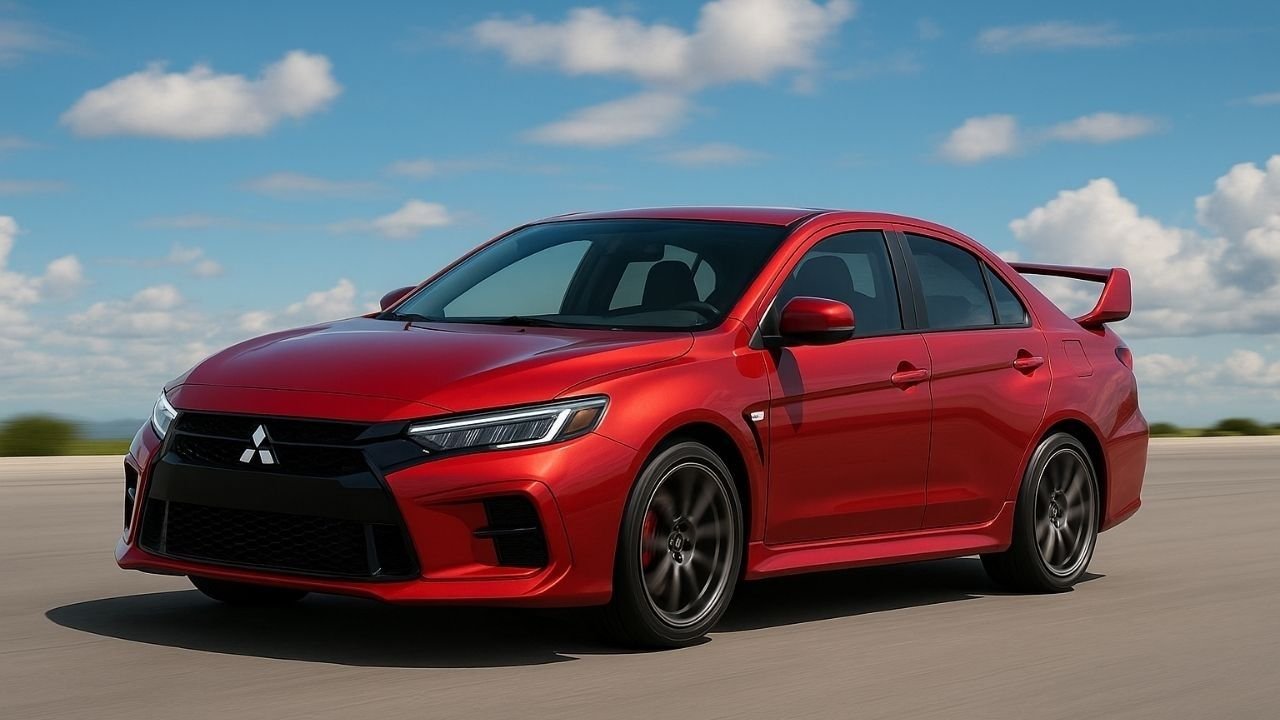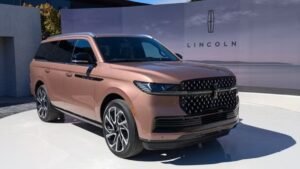The legendary Mitsubishi Lancer Evolution (commonly “Evo”) series holds a unique vicinity in performance-vehicle history — born from rally competition, loved by way of fanatics international for its brute-force AWD, turbocharged four-cylinders and uncompromising motive force-recognition. Production of the Evo line formally ended with the Evo X in 2016, leaving an opening inside the excessive-performance sedan world.
Now, in step with more than one sources, Mitsubishi Motors Corporation (Mitsubishi) is ready to revive the nameplate with the 2026 Lancer Evolution XI, signalling a dramatic comeback. While all info aren’t but confirmed, early reports display a blend of rally DNA, advanced electrification and present day performance tech.
Here’s our deep dive into what’s known (and what’s still spec) about the 2026 Evo XI — plus what it might mean for performance car fans.
What We Know So Far: Spec & Technology
Powertrain & performance
- The Evo XI (or “Final Edition” in some reports) is expected to combine a turbocharged 2.0-litre four-cylinder engine with electric motors in a hybrid layout, enabling instant torque, improved traction and modern efficiency.
- Reported output figures vary: some sources suggest around 420 hp with ~385 lb-ft of torque. Another estimate for a broader comeback version suggests ~450 hp.
- Drivetrain: An advanced version of Mitsubishi’s signature Super All-Wheel Control (S-AWC) system is to be used, now enhanced for hybrid torque-vectoring and AI-based traction prediction.
- Performance target: 0-60 mph in under 3.5 seconds (in some optimistic specs) or under 4 seconds in more conservative numbers.
- Transmission and weight-saving technologies are also emphasised: dual-clutch automatic (8-speed) and extensive use of lightweight materials.
Design & heritage
- The exterior maintains rally-inspired aggression: broad fenders, large wing/spoiler, purposeful aero features, modern lighting and carbon/aluminium panels.
- The interior combines driver-focused instrumentation (digital cluster, performance telemetry) with high-quality materials (Alcantara seats, carbon fibre trim).
- The revival is pitched not just as a nostalgic throwback, but as a redefined performance machine for the hybrid/electric era. “We didn’t just want to bring the Evo back; we wanted to redefine what performance means in this decade,” said one engineer.
Availability & market
- Launch is slated for 2026 in major markets (Japan, US, Europe) with limited production volumes (e.g., 2,000 units globally in one report) to emphasise exclusivity.
- Pricing indications: For the “Final Edition” model, starting around US$58,000 in the U.S. for base, climbing for higher-spec variants.
- Notes: Some ambiguity remains whether this will be the start of a full revival of the Evo name or a one-time “Final Edition” collector model. Mitsubishi itself states that “market needs and demands will dictate direction.”
Why the Comeback Matters
There are several reasons why the Evo XI revival could be a big deal:
- Heritage and brand credibility: The original Evo lineage forged Mitsubishi’s performance credibility globally. A well-executed return taps into that legacy and could rejuvenate Mitsubishi’s emblem belief.
- Performance sedan phase: While crossover-SUVs dominate, performance-oriented sedans are scarcer. A cutting-edge Evo ought to fill the area of interest of motive force-centered, excessive-tech AWD sports sedans.
- Hybrid/electric powered technology relevance: By combining hybrid energy with rally-bred AWD dynamics, Mitsubishi can bridge the space among vintage-faculty overall performance and new-generation policies/client expectancies.
- Motorsport capacity: The Evo historical past is rooted in rallying; a go back may additionally hint at Mitsubishi’s renewed interest in motorsport or performance branding (through its Ralliart overall performance arm).
What to Watch / Potential Pitfalls
- Final Edition vs Long-Term Revival: Some reports suggest the 2026 model may be a limited run “farewell” rather than a full continuation of the Evo line. If so, fans may view it as a collectible rather than a new ongoing platform.
- Pricing & accessibility: Limited-manufacturing status+ superior hybrid tech may additionally push charge past reach of common enthusiasts who cherished the sooner, more low priced Evo models.
- Real-global riding feel: One project may be retaining the raw, mechanical engagement that made earlier Evos beloved, whilst integrating hybrid systems and modern-day electronics that could dilute sense if not tuned carefully.
- Market recognition: The marketplace for excessive-overall performance sedans (in particular with guide gearboxes, high gasoline/preservation price) is smaller. Mitsubishi need to make certain call for and profitability.
- Timing & execution: Rumours have swirled for years about an Evo return; Mitsubishi must launch a compelling product rather than just talk up the dream.
Conclusion
The 2026 Mitsubishi Lancer Evolution XI heralds one of the maximum anticipated comebacks in the automotive world. It stands on the intersection of rally background, overall performance-vehicle way of life and the era of hybrid/electric engineering. If Mitsubishi gives you on the promise — combining excessive strength (four hundred hp), immediate hybrid torque, sensible AWD, and the unmistakable Evo DNA — it is able to reignite the spirit of the rally-bred performance sedan in a modern-day context.
However, a lot rests on the actual execution: pricing, production extent, riding revel in and average market reception will decide whether this is a fleeting collector’s piece or the foundation of a new performance generation for Mitsubishi. For now, fans of the original Evo have reason to be excited—and cautiously optimistic.

